A graceful seventeenth-century churchyard — the Newman Congregational cemetery — lies near my house in Rumford. Formed in 1642 as the parish of Seacunke (soon renamed Rehoboth) in the Plymouth Colony, this parish grew and inherited the name of Rumford at the end of the eighteenth century, when other towns (including Rehoboth and Seekonk) were partitioned from the original parish. Now, having changed hands in the border shift between two New England states, Rumford has been subsumed in the city of East Providence, Rhode Island. The oldest surviving dated stones date from the 1680s, and include a rough-cut flat slab (Ephraim Harmon, 1687) as well as smaller field stones with only initials or no carving at all. In the eighteenth century, Rehoboth was served by more than one skilled carver, leaving dozens of pediments with death’s heads, cherubs, or more abstract tympana or borders, armorial achievements, and many with typography-quality lettering nearly as crisp now as when carved.
The old churchyard has now merged with a much larger, nondescript municipal cemetery, but it is not hard to make out the limits of the old yard by the change in material, style and date of the stones as one gets closer to the church. Yet a few anomalies stand out. There is an occasional modern burial — a twentieth-century descendant whose granite monument stands out among the slate nucleus of the old Rehoboth parishioners. There are fewer anomalies in the other direction, but I was quickly drawn to two eighteenth-century slate stones which lie incongruously next to a twentieth-century squat basalt pyramid near the Southwest fence.
The stones mark the graves of two slaves, Sherrey and Anna:
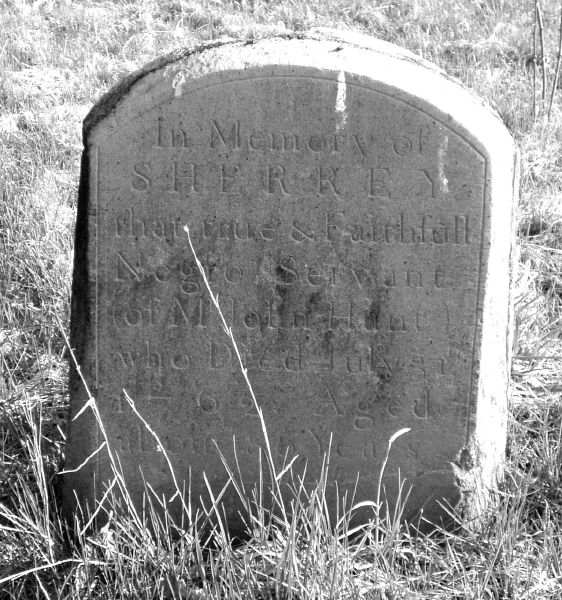
In Memory of
SHERREY
that true and Faithfull
Negro Servant
of Mr. John Hunt
who died Jul 31st
1762 Aged
about 80 Years
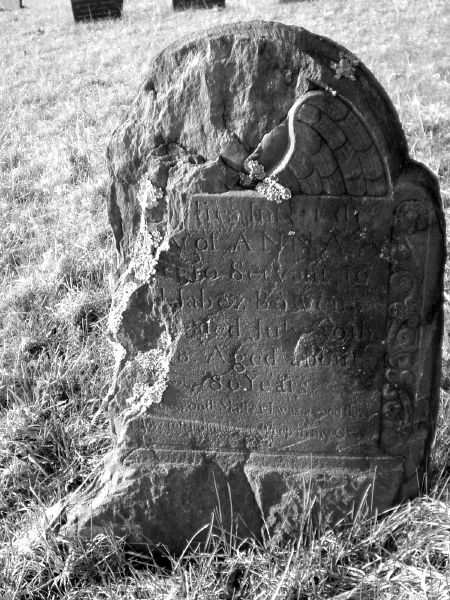
[Here] lies Interred
[the bod]y of ANNA
[N]egro Servant to
[Co]l Jabez Bowen
[dec]eased July 30th
[17_]8 Aged about
80 Years
[…]d a good Master I was a good slave
[…] now rest home and sleep in my Grave
They have no surnames, of course, but both their masters are named: respectable gentleman farmers, whose own gravestones are among the more lavish back in the cluster of slate toward the church. Colonel Jabez Bowen and his wife have fine table-slabs with well-cut armorial bearings.
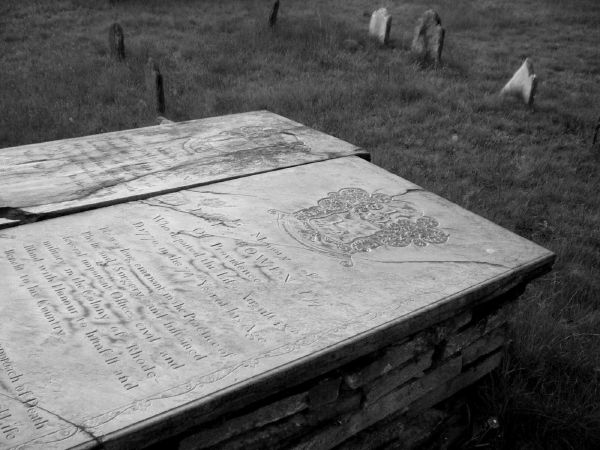
Mr. John Hunt has an unusually thick and ornate vegetal border running up both sides of his upright slate under the death’s-head tympanum (photo from the Farber collection):
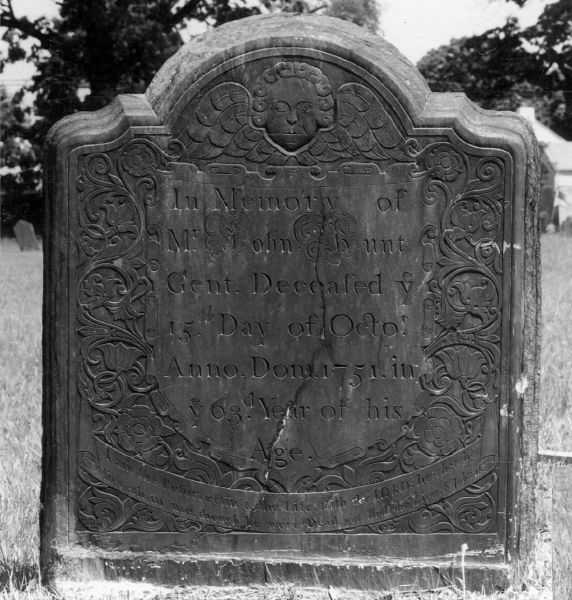
Did Sherrey and Anna know each other? Did they get along? Were they born in Africa? Did they understand one another’s native languages? Did they ever hear it, or use their own? How large was their community of slaves in seventeenth-century Rehoboth? How many others lie buried, perhaps near them, whose masters could not or would not pay for fine stones?
My dog and I see them nearly every day.
[1] Many stones in this cemetery are visible on the web, as part of the Farber Gravestone Collection of the American Antiquarian Society.
[2] Sherrey and Anna are included in the Rhode Island Cemetery Database.

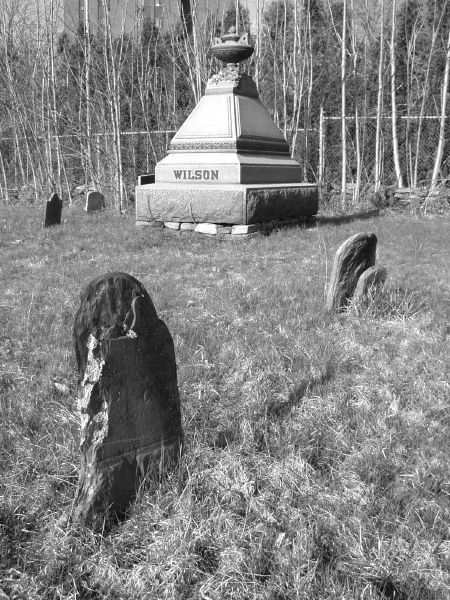
2 Trackbacks/Pingbacks
[…] The dramatic setting puts Scipio at the front and center of the graveyard, with all the white folks clustered away at the back, between trees. The graveyard originally had another orientation: Bay Spring Avenue itself wasn’t laid out until October of 1802 (in the division of Thomas Allin’s farmland), and the side street, Adams Ave., didn’t exist till long after. The resting place of the people of color, meant to be something apart, is now in the place of honor, as the graves are approached past Scipio’s lone sentinel stone. Many area graveyards embed subtle stories of the changing place of people of color in the community. Some time ago I posted on this in a graveyard near our current home in Rumford, with the beautiful graves of Sherrey and Anna. […]
[…] of mine settled in the same place 300 years ago! My next task is to locate his gravestone, in the Newman Cemetery where I walked my dog every day for years, without an […]
Post a Comment